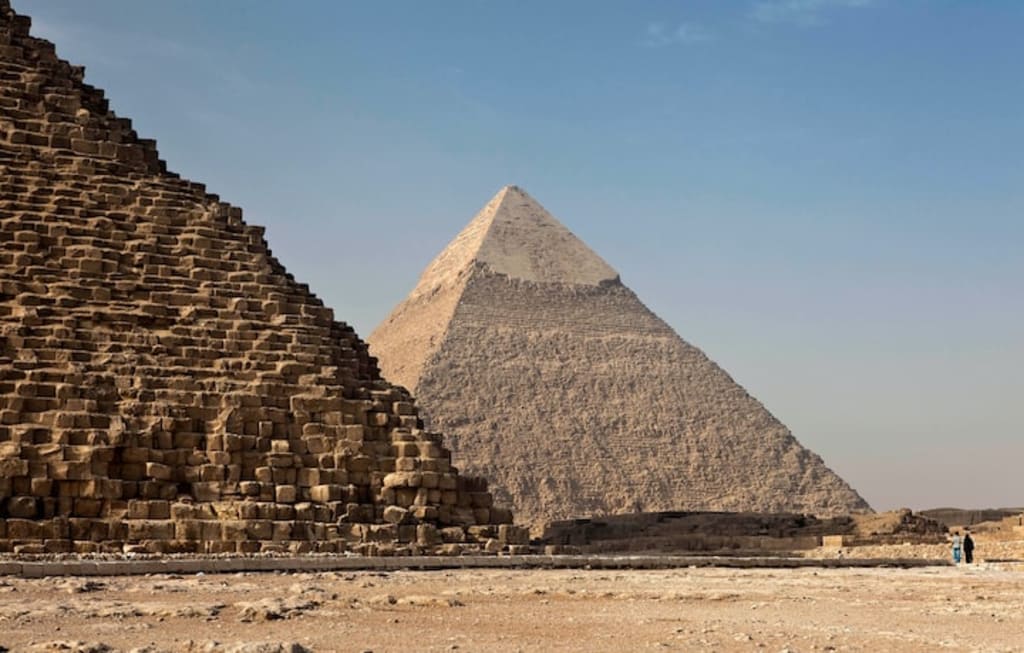Unveiling the Secrets of the Pyramid of Giza: An Analysis of its Architecture and MEP Concepts
A Fascinating Look at the Engineering and Design of the World's Oldest and Largest Pyramid, and How Modern Mechanical, Electrical, and Plumbing Systems Could be Incorporated Today

The Great Pyramid of Giza is one of the most remarkable architectural wonders of the ancient world. It is the oldest of the Seven Wonders of the Ancient World, and it still stands as a testament to the incredible skills and knowledge of the people who built it. The Pyramid of Giza was built more than 4,500 years ago, and it continues to fascinate people from all over the world.
From an architectural point of view, the Pyramid of Giza is an engineering marvel. It is made up of millions of limestone blocks that were quarried and transported from nearby areas. The pyramid was built to be 146 meters high and 230 meters wide. The base of the pyramid covers an area of 13 acres. The total volume of the pyramid is estimated to be 2.6 million cubic meters.
The pyramid was built in a very precise manner. The builders used a system of ramps to transport the blocks to the construction site. They used a complex set of pulleys and levers to lift the blocks into place. The builders were able to achieve remarkable accuracy in the placement of the blocks. The pyramid is aligned almost perfectly with the cardinal directions.
The Great Pyramid of Giza is not just an architectural marvel. It is also an excellent example of how the principles of mechanical, electrical, and plumbing (MEP) engineering were used in ancient times. These principles are used to design, construct, and maintain modern buildings. However, the builders of the Pyramid of Giza were able to incorporate these principles in a way that was truly remarkable for their time.
Mechanical Engineering in the Pyramid of Giza
Mechanical engineering is concerned with the design, construction, and operation of machines. In the Pyramid of Giza, mechanical engineering principles were used to transport and place the massive limestone blocks. The builders used ramps to transport the blocks to the construction site. They also used a complex system of pulleys and levers to lift the blocks into place.
The builders of the pyramid were able to achieve remarkable precision in the placement of the blocks. They were able to align the blocks almost perfectly with each other. They were also able to ensure that the blocks were level and straight. This level of precision required a deep understanding of mechanical engineering principles.
Electrical Engineering in the Pyramid of Giza
Electrical engineering is concerned with the design, construction, and maintenance of electrical systems. In the Pyramid of Giza, electrical engineering principles were used to provide lighting inside the pyramid. The builders used shafts to allow sunlight to enter the pyramid. These shafts were positioned in such a way that the sun would shine into the pyramid at certain times of the day.
The builders also used a form of electrical engineering to create an internal lighting system. The walls of the pyramid were lined with a layer of white limestone. This limestone was highly reflective and would reflect any light that entered the pyramid. The builders placed torches at strategic locations inside the pyramid. The torches would light up the reflective limestone, providing a bright and well-lit interior.
Plumbing Engineering in the Pyramid of Giza
Plumbing engineering is concerned with the design, construction, and maintenance of plumbing systems. In the Pyramid of Giza, plumbing engineering principles were used to provide water to the workers and to drain the water from the construction site. The builders used a system of canals to transport water from the Nile River to the construction site.
They also used a form of plumbing engineering to drain water from the construction site. The builders dug a series of trenches around the construction site. These trenches were filled with gravel and sand. This allowed water to seep into the ground and be absorbed by the soil. The builders were able to maintain a dry and stable construction site even during the rainy season.
Conclusion
Lastly, the Pyramid of Giza is an architectural masterpiece that showcases the incredible skills and knowledge of the ancient Egyptians. The precision in the placement of the massive limestone blocks, the ingenious use of sunlight and internal lighting, and the use of canals and trenches to transport and manage water are all examples of the application of mechanical, electrical, and plumbing engineering principles in ancient times.
The builders of the Pyramid of Giza were able to achieve remarkable feats of engineering without the aid of modern technology. They used their knowledge of mathematics, geometry, and engineering to create a structure that has stood the test of time for more than 4,500 years. The Pyramid of Giza remains one of the most visited and studied landmarks in the world.
The principles of mechanical, electrical, and plumbing engineering continue to be essential in modern construction. They are used to design, construct, and maintain buildings, ensuring the safety, comfort, and efficiency of modern structures. The Pyramid of Giza is an excellent example of how these principles have been used in ancient times and continue to be relevant today.
To sum up, the Pyramid of Giza is not just a monument to ancient Egypt's achievements but also a testament to the ingenuity and resourcefulness of humankind. Its construction is a testament to the knowledge and skills of the ancient Egyptians and serves as a reminder that engineering is a timeless discipline that has been shaping the world for thousands of years.
About the Creator
Enjoyed the story? Support the Creator.
Subscribe for free to receive all their stories in your feed. You could also pledge your support or give them a one-off tip, letting them know you appreciate their work.






Comments
There are no comments for this story
Be the first to respond and start the conversation.